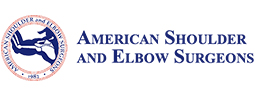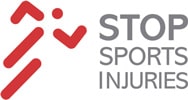
What is Hill-Sachs Lesion?
Your shoulder consists of a ‘ball-and-socket joint’. The humerus (upper arm bone) has a rounded head (ball) that is attached to the glenoid cavity (socket) in the shoulder blade. Certain injuries can cause dislocation of the joint and damage to the humeral head. Damage to the back and outer portion of the humeral head can result in a defect called a Hill-Sachs lesion. A Hill-Sachs lesion usually occurs when the humeral head dislocates towards the front of the joint.
What Causes a Hill-Sachs Lesion?
Hill-Sachs lesions are associated with shoulder dislocation which may be caused by:
- Falls or accidents
- Contact sports as well as sports that involve overhead arm movements
- Work that involves lifting, pushing, pulling or repetitive overhead movements
What are the Symptoms Associated with a Hill-Sachs Lesion?
Hill-Sachs lesions are associated with dislocation which can have the following symptoms:
- Severe pain
- Difficulty with shoulder movements
- Shoulder deformity
- Swelling around the shoulder joint
- Weakness
- Muscle spasm
Diagnosis of a Hill-Sachs Lesion
Your doctor will review your symptoms and medical history and perform a physical examination of your shoulder to check for swelling, pain, and movement. One or more of the following imaging tests are performed to visualize the structures of the shoulder joint.
- X-ray
- CT scan
- MRI
- Ultrasound
Treatment of a Hill-Sachs Lesion
Your doctor suggests treatment based on the following factors:
- Lesion size
- Location of the lesion
- Arm mobility
- The extent of damage or bone loss to the glenoid socket
Injuries associated with a dislocation such as a labral tear or loss of glenoid bone are managed first.
If a Hill-Sachs lesion affects only a small area of the humeral head (<20%) you may not require treatment other than physical therapy to strengthen muscles that support your shoulder joint, such as the rotator cuff and muscles that stabilize the scapula.
Larger lesions can cause instability of the joint and may require surgery. Surgical interventions include:
- Tightening of the capsule of the glenohumeral joint to limit movement
- Augmentation of glenoid bone
- Augmentation of the humeral head
- Filling tissue in the defect (Remplissage)
- Dis-impaction of the lesion with bone graft.
- Resurfacing of the humeral head with an implant
Other Shoulder Condition Topics:
- Acromioclavicular (AC) Joint Osteoarthritis
- Baseball and Shoulder Injuries
- Rotator Cuff Pain
- Massive Retracted Rotator Cuff Tear
- Bicep Tendon Rupture
- Proximal Biceps Tendon Rupture
- Long Head Biceps Tendon Rupture
- Proximal Biceps Tendinitis
- Shoulder Pain
- Internal Impingement of the Shoulder
- Sternoclavicular Joint (SC joint)
- SLAP Tears
- Arthritis of the Shoulder
- Shoulder Labral Tear
- Shoulder Labral Tear with Instability
- Shoulder Dislocation
- Shoulder Trauma
- Subluxation
- Little League Shoulder
- Frozen Shoulder
- Clavicle Fracture
- Glenoid Fractures
- Proximal Humerus Fractures
- Shoulder Disorders
- Hill-Sachs Lesion
- Thrower’s Shoulder
- Overhead Athlete’s Shoulder
- Snapping Scapula
- Shoulder Instability
- Shoulder Impingement
- Rotator Cuff Tear
- Acromioclavicular Joint Injury
- Shoulder Fracture
- Scapula Injury
- Biceps Tunnel Disease
- AC Joint Injury
- Revision RC Repair
- Revision Repair








